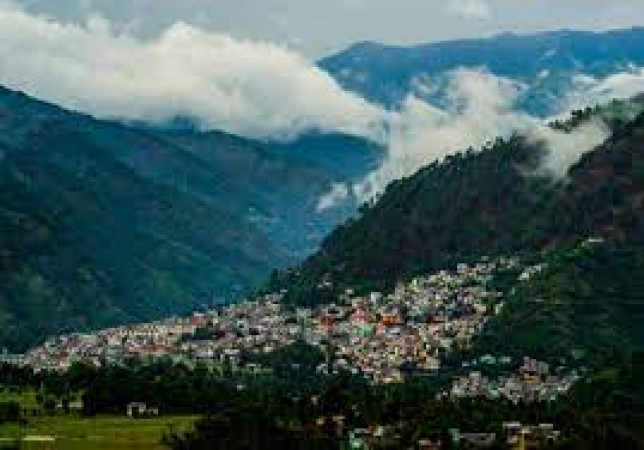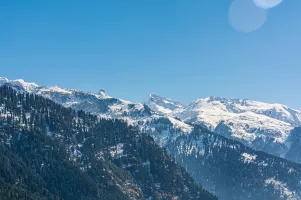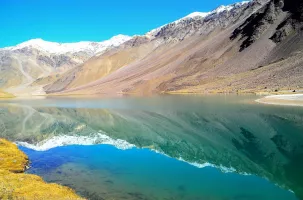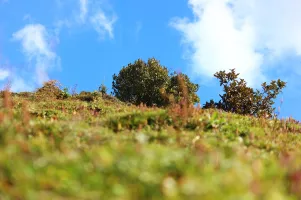
Chamba
Duration
2 to 4 Days
2 to 4 Days
Best time to visit
Mar-Jun, Sep-Nov
Mar-Jun, Sep-Nov
Theme
Hill Station, Heritage
Hill Station, Heritage
Chamba Travel Guide
Chamba, located in the beautiful state of Himachal Pradesh in India, is a picturesque destination known for its historical significance, stunning landscapes, and rich culture. This charming town is famous for its ancient temples, lush green valleys, and the snow-capped Himalayan peaks that surround it.Top Attractions in Chamba
- Chamera Lake
- Laxmi Narayan Temple
- Bhuri Singh Museum
- Khajjiar - Mini Switzerland of India
- Chaugan - the heart of Chamba
Chamba is Famous for
Its pristine beauty and serene environment make Chamba a haven for nature lovers and peace seekers.Top Attractions in Chamba
- Exploring the ancient temples
- Boating in Chamera Lake
- Strolling through the lush meadows of Khajjiar
- Immersing in the local culture at the Manimahesh Yatra
- Shopping for traditional Himachali handicrafts
What's Great about Travelling to Chamba?
- Peaceful and serene environment
- Rich cultural heritage
- Perfect for nature lovers and adventure enthusiasts
What's Not So Great about Travelling to Chamba?
- Limited modern amenities
- Remote location may not be suitable for those seeking a bustling city experience
Travel Tips for Chamba
- Carry warm clothing, as the weather can get chilly
- Respect the local customs and traditions
- Book accommodations in advance during peak tourist seasons
Important Chamba trip information
- Ideal Duration: 3-4 days
- Best Time to Visit: March to June and September to November
- Nearby Airports and Railway Stations: The nearest airport is in Pathankot and the closest railway station is in Pathankot as well.
Per Person
9,999
*EXCLUDING APPLICABLE TAXES 3.7 Ratings
( 5 Reviews )
( 5 Reviews )
Per Person
15,000
*EXCLUDING APPLICABLE TAXES 5.0 Ratings
( 4 Reviews )
( 4 Reviews )
Per Person
18,000
*EXCLUDING APPLICABLE TAXES 5.0 Ratings
( 4 Reviews )
( 4 Reviews )
Per Person
16,000
*EXCLUDING APPLICABLE TAXES 5.0 Ratings
( 4 Reviews )
( 4 Reviews )
Per Person
6,999
*EXCLUDING APPLICABLE TAXES 3.7 Ratings
( 5 Reviews )
( 5 Reviews )
Per Person
16,000
*EXCLUDING APPLICABLE TAXES 5.0 Ratings
( 4 Reviews )
( 4 Reviews )
FAQ's on Chamba
Q1: What is the best time to visit Chamba?
The best time to visit Chamba is during the summer months from March to June when the weather is pleasant for exploring the region's beauty. Alternatively, the monsoon season from July to September offers lush green landscapes, but outdoor activities may be limited due to rainfall. Winter, from November to February, brings snowfall and is ideal for experiencing a white winter wonderland. Consider visiting during the Minjar Fair in July or the Suhi Mata Mela in April for cultural experiences.
Q2: Do I need a visa to travel to Chamba?
Most tourists visiting Chamba will need a visa to enter India, of which Chamba is a part. Check with the nearest Indian embassy for specific visa requirements based on your nationality. Visitors from certain countries may be eligible for an e-Visa, allowing for easier travel to Chamba and other parts of India.
Q3: What are the must-visit attractions in Chamba?
Chamba is known for its stunning natural beauty, with attractions like the Chamera Lake, Bhuri Singh Museum, and the ancient temples of Lakshmi Narayan and Chamunda Devi. Don't miss exploring the historical Chamba Palace and the scenic Khajjiar, often referred to as the "Mini Switzerland of India."
Q4: Is Chamba a safe place to travel?
Chamba is generally a safe destination for travelers. However, like any place, it's important to exercise caution, especially in crowded areas and at night. Avoid isolated areas and be mindful of your belongings. Stay informed about local conditions and follow any travel advisories in place.
Q5: What is the local currency in Chamba and can I use credit cards?
The local currency in Chamba, as in the rest of India, is the Indian Rupee (INR). ATMs are widely available in Chamba town for cash withdrawals. While credit cards are accepted in some hotels and larger establishments, it's advisable to carry cash for smaller purchases and in rural areas.
Q6: What is the local cuisine like in Chamba?
is a delightful mix of Himachali and Punjabi flavors, featuring dishes like Madra, Sidu, and Chha Gosht. Vegetarians will enjoy dishes like Babru and Aktori. Don't miss trying the local sweet delicacy of Mittha, made with rice, sugar, and dry fruits. Dietary considerations can be accommodated in most restaurants upon request.
Q7: What transportation options are available in Chamba?
Chamba offers various transportation options, including buses, taxis, and auto-rickshaws for getting around the town and nearby areas. Renting a car or hiring a private driver is also a convenient way to explore the region. Public transport may be limited in remote areas, so plan accordingly.
Q8: Are there any cultural norms or etiquette I should be aware of when visiting Chamba?
When visiting Chamba, it's important to respect the local customs and traditions. Dress modestly, especially when visiting religious sites. Removing your shoes before entering a temple or someone's home is a common practice. Greet locals with a smile and a "Namaste" as a sign of respect. Avoid public displays of affection and be mindful of local sensitivities.
Q9: I am a travel agent. How can I buy travel leads of Chamba?
Register yourself as a travel agent at agents.tripclap.com and then you can buy travel leads to Chamba once your account is approved. For more details contact our support team at +91-8069186564 or support@tripclap.com



